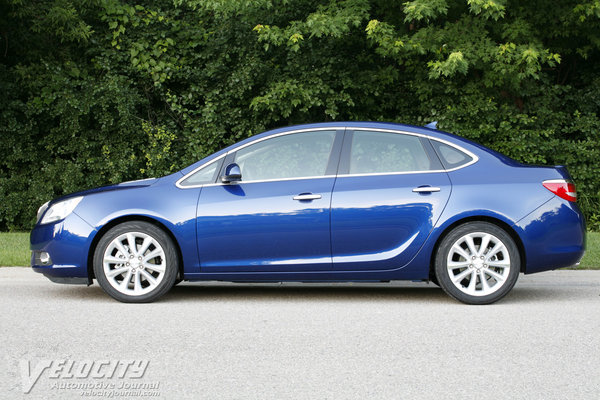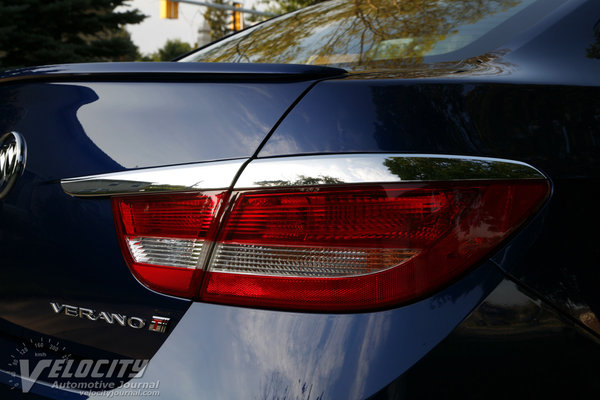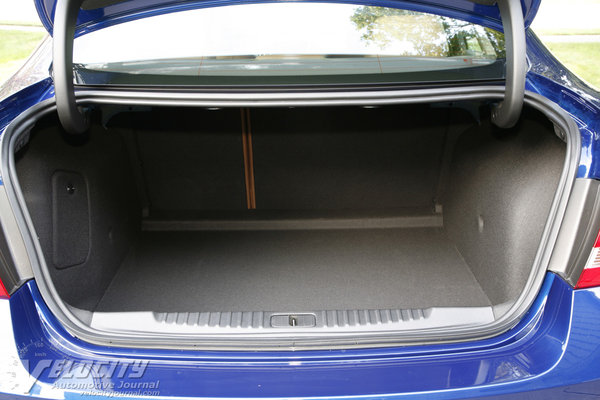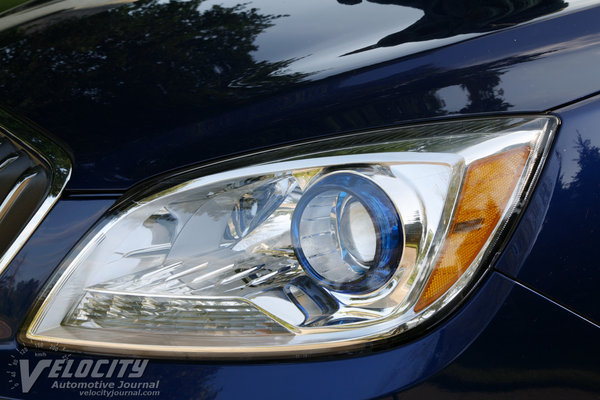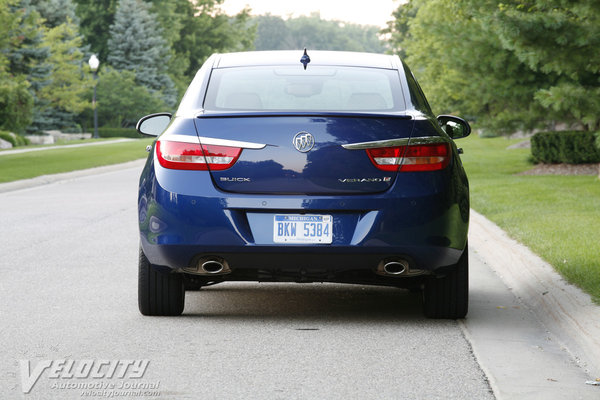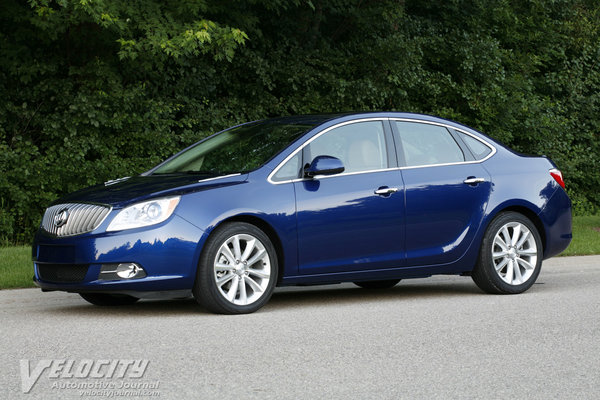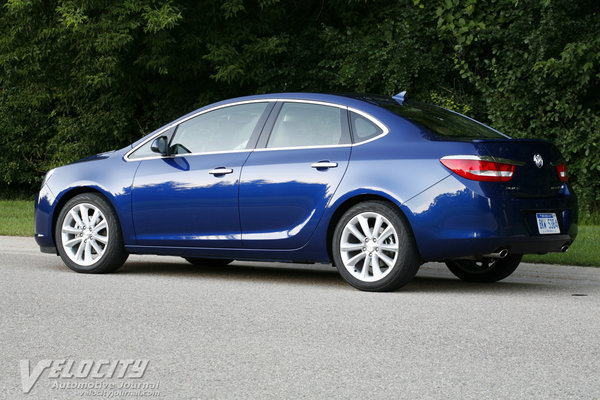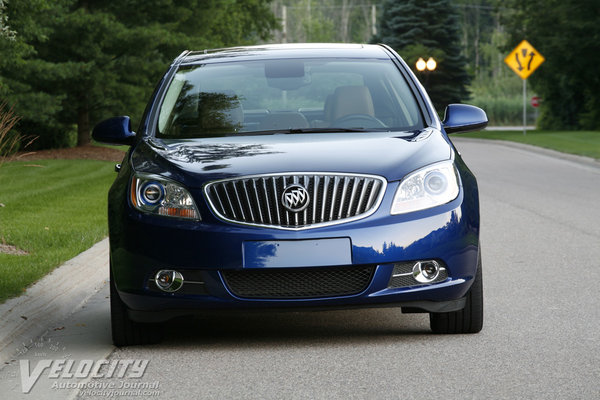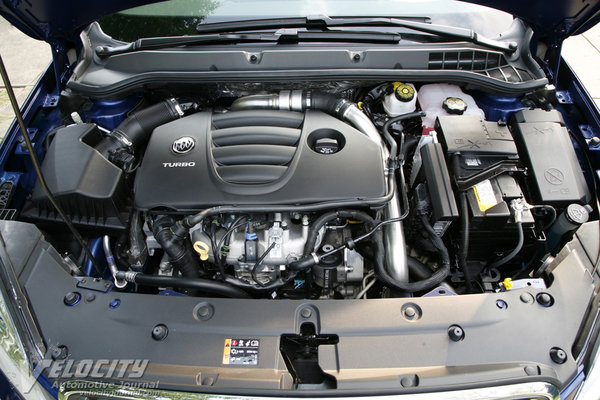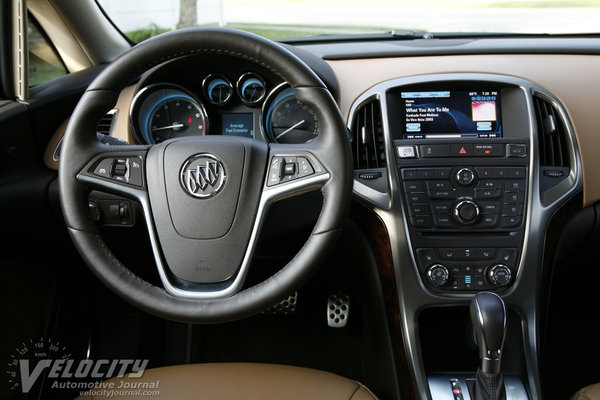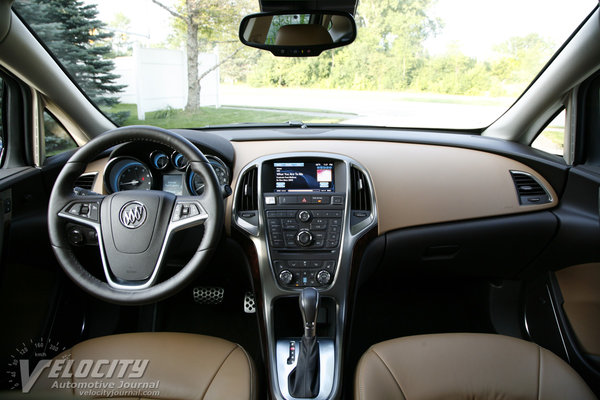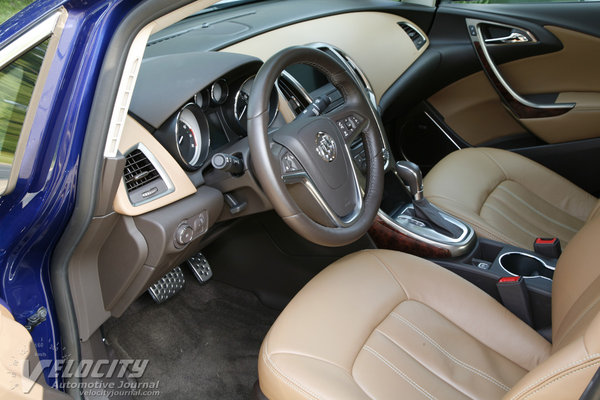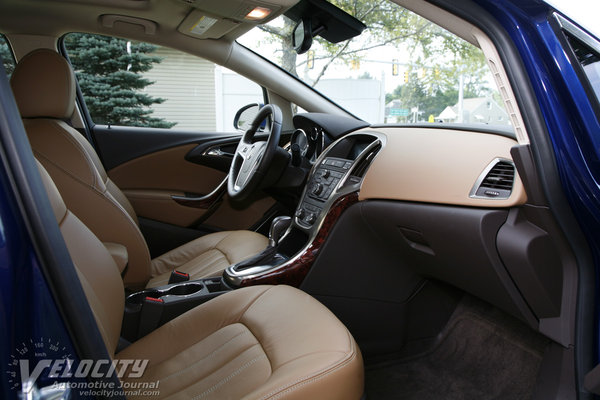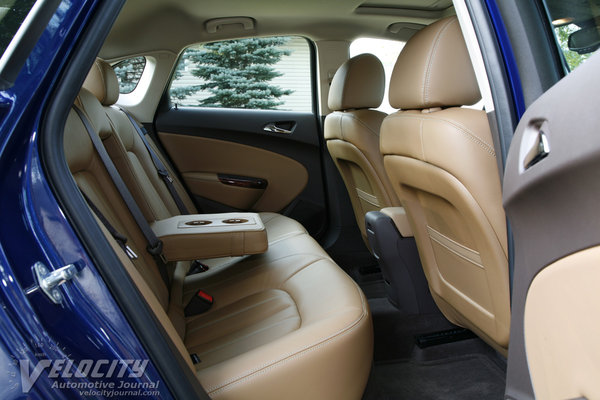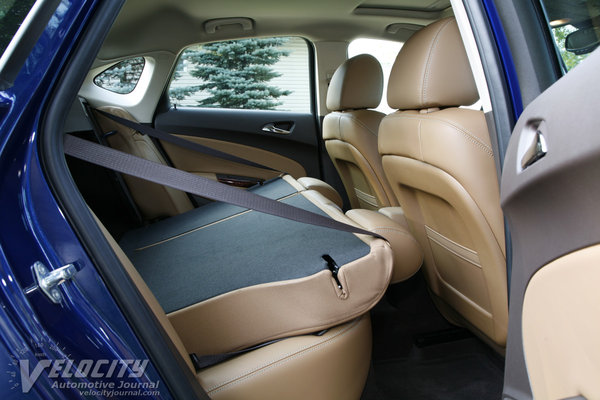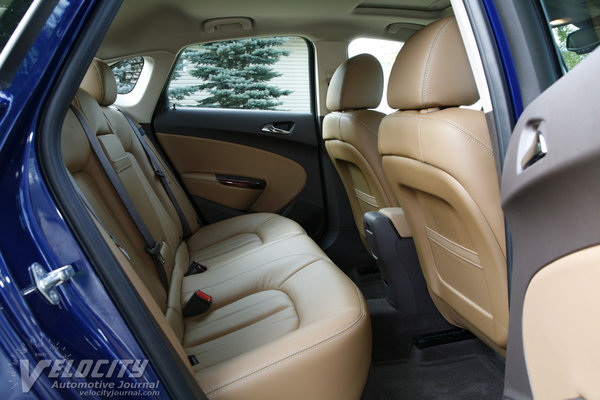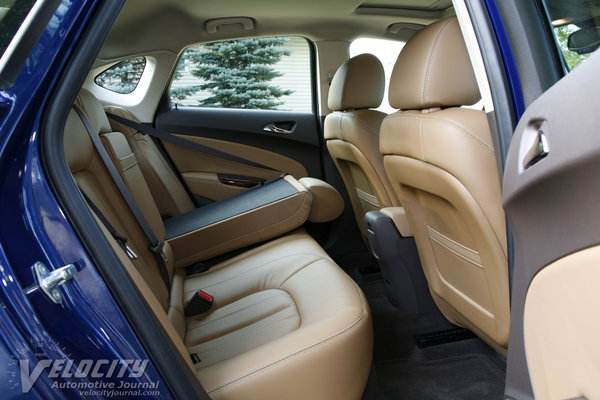2013 Buick Verano Turbo
09/23/2013
Shahed Hussain
Buick's new Verano is its new entry-level sedan positioned in the lineup below the Regal. The Verano benefits from interior upgrades and higher output engines that distinguish it from the closely related, but less expensive Chevrolet Cruze. Buick set the Verano's base price at a reasonable $23,225, ranging up to over $30,000 for the Verano Turbo. The closest match to the base Verano is the Acura ILX, the upscale relative of the Honda Civic. However, the Verano Turbo plays in a much tougher league against larger premium sedans from German and Japanese brands.
Instead of the 1.4L turbo and 1.8L inline fours available in the Cruze, Buick adopts a standard normally-aspirated 2.4L 4-cylinder or an optional 2.0L turbo mated to a 6-speed automatic. Surprisingly, Buick also offers a 6-speed manual as an option with the turbo four. We tested a fully-equipped Verano 1ST powered by the 2.0L turbo and 6-speed automatic. The only options were a sunroof ($900) and audio system with navigation ($795). The total sticker price added up to a substantial $31,695. Notable standard features include 18-inch alloy wheels, fog lamps, rearview camera, leather seats, power driver's seat, and heated steering wheel.
Buick dressed up the Verano's interior with lustrous titanium trim on the doors and center stack. Simulated wood veneer lines the center console and door handles. A soft-touch dash, padded armrests, and chrome-rimmed gauges convey the luxurious ambiance in the Buick tradition. The heated front seats are upholstered in soft leather. The driver's seat has 6-way power settings, but no lumbar adjustability; the front passenger seat has 8-way manual settings. Although the front seats are supportive, their narrow proportions may not suit larger occupants. Rear seat accommodations are comfortable for two passengers, but the unlucky middle seat occupant must tolerate a stiff, unpadded seatback. Back seat legroom is adequate, but not especially spacious. Compared to the Cruze, the Verano is slightly smaller in most interior dimensions.
Behind the wheel, the driver sees an instrument panel consisting of an 8,000 RPM tachometer and a 170 MPH speedometer, accompanied by smaller fuel and coolant temperature gauges. A multi-function trip computer display show essential vehicle data. Audio, cruise, and Bluetooth phone controls are integrated on the spokes of the leather-wrapped steering wheel. Exterior power mirror controls are located awkwardly on the upper front door panel. The Verano's aluminum brake and accelerator pedal are somewhat unexpected in a luxury-oriented compact sedan. Buick eliminated the conventional pedal-operated parking brake, instead using a new electronic brake actuated by pulling a tiny lever on the center console.
Buick's infotainment system interface combines a touchscreen with knobs and buttons for commonly used controls. Audio controls are logically laid out, but adjusting bass and treble requires digging into the menus via the touchscreen. Likewise, selecting music tracks from a USB drive also requires several taps through the menus. On a positive note, the audio system support Pandora via Bluetooth pairing via a smartphone. A USB port and analog audio jack for media players are located inside the center console bin.
Sharing its platform with the Cruze, the Verano also has common suspension specifications with the Chevy. The typical MacPherson struts are in front, with coil springs and a stabilizer bar. At the rear is a torsion-beam axle suspended by coil springs along with a Z-link control arm. Disc brakes are at all four corners with standard ABS and Stabilitrak stability control. Continental P235/45R18 tires are mounted on 18-inch diameter forged alloy wheels. The Verano's steering is an electrically-assisted rack-and-pinion setup with 2.8 turns lock-to-lock. Curb weight for the Verano Turbo is a substantial 3,550 lb.; the base Verano is somewhat lighter at 3,420 lb.
Of the two available engines, the all-aluminum Ecotec 2.0L turbo is the obvious enthusiast's choice. Maximum output for this DOHC inline-4 is an impressive 250-bhp @ 5,300 RPM; torque peaks at 260 lb.-ft. at only 2,000 RPM. The Ecotec turbo also features variable valve timing and direct fuel injection. Buick recommends premium fuel for the turbo. Cost-conscious customers may prefer the 180-bhp Ecotec 2.4L that runs on regular unleaded.
Buick couples the Ecotec 2.0L to a choice of a 6-speed manual or automatic, but the base 2.4L is available only with the Hydra-Matic 6T45 automatic. The higher output turbo gets the Hydra-Matic 6T50 automatic. Both automatics have a 0.75:1 sixth gear overdrive combined with a 3.23:1 axle ratio. According to the EPA, the Ecotec turbo and 6T50 automatic is rated at 21/30 MPG (city/hwy.). Choosing the 6-speed manual boosts highway mileage to 31 MPG, but city fuel efficiency drops to 20 MPG. In our mixed highway and urban driving we averaged just over 23 MPG. The larger 2.4L four is rated at 21/32 MPG (city/hwy.), a minor improvement over the 2.0L turbo.
The boosted Ecotec endows the Verano with surprisingly brisk acceleration, aided by seamless shifts from the 6-speed automatic. Ample low-RPM torque output allows the Verano to leave most traffic behind from a stoplight. Midrange throttle response is especially impressive, as the turbo spools up with minimal delay. Noise and vibration levels throughout the rev range are commendably subdued.
As expected from Buick, the Verano's suspension tuning favors comfort over sporty handling. Although most of its competitors benefit from a fully independent suspension, the Buick's semi-independent beam axle did not detract from its serene ride. Significant body roll and moderate understeer discourage any attempts at sporty driving. Full throttle acceleration caused the Verano to squat down on its rear suspension, but torque steer remained negligible. The electric power steering provides decent feedback through the wheel. Buick's engineers managed to keep the steering from feeling overboosted at 70+ MPH, so the Verano tracks straight and true. Tire and wind noise are commendably hushed. Firm pedal feel and easy modulation gave us confidence in the Verano's brakes.
The Verano fills the long-vacant compact sedan slot in Buick's expanding lineup. As an entry model, the base Verano's role is to attract younger customers to Buick dealerships. However, the Verano Turbo runs into some serious headwinds at its nearly $32K price point. Alternatives such as the Acura TSX, Audi A4 or the Infiniti G37 are only slightly more expensive, and all are significantly more spacious premium sedans. So although the Verano Turbo is a perfectly competent compact 4-door, its pricing makes it tough sell against its numerous competitors.

